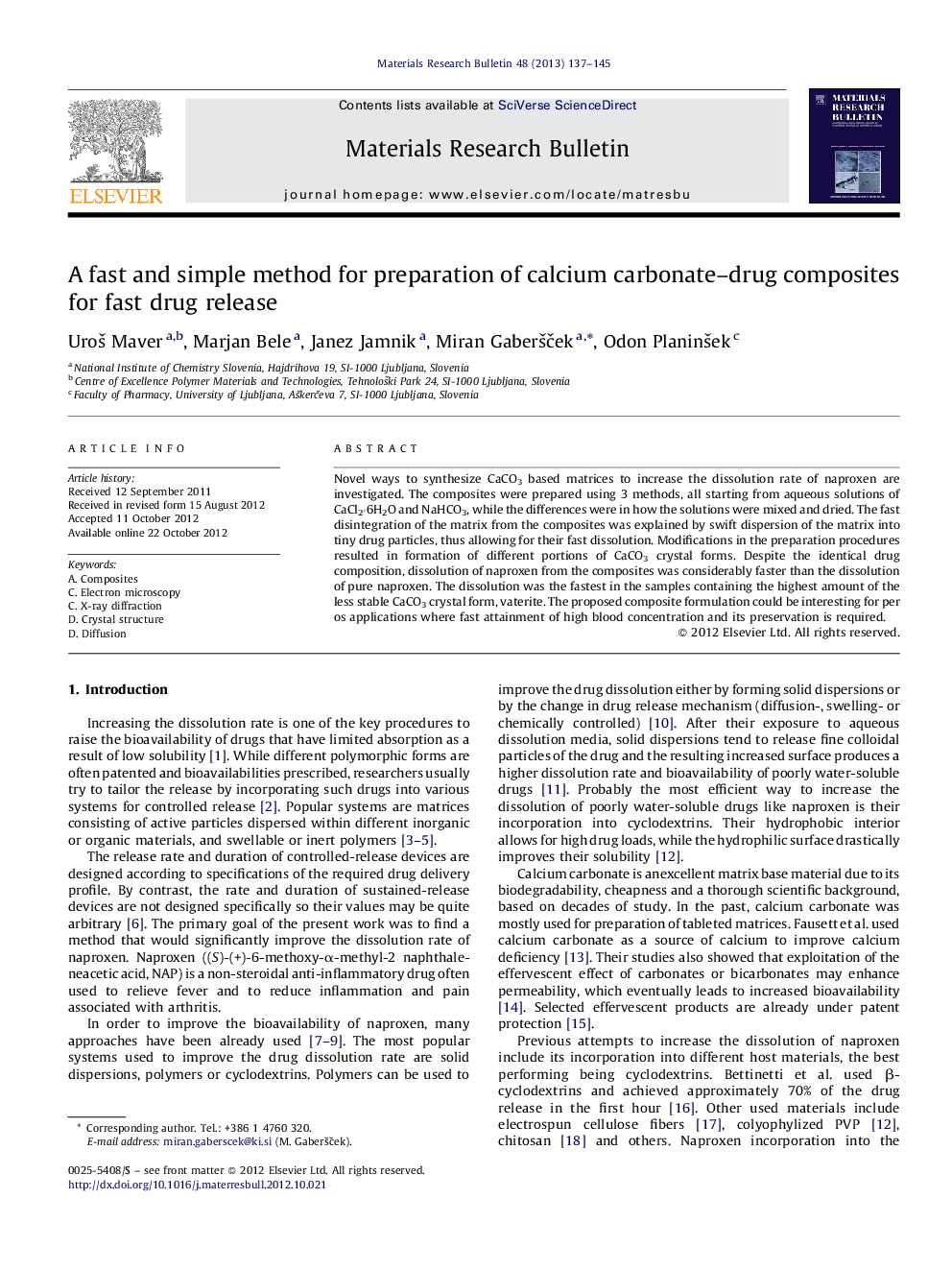| Article ID | Journal | Published Year | Pages | File Type |
|---|---|---|---|---|
| 1489292 | Materials Research Bulletin | 2013 | 9 Pages |
Novel ways to synthesize CaCO3 based matrices to increase the dissolution rate of naproxen are investigated. The composites were prepared using 3 methods, all starting from aqueous solutions of CaCl2·6H2O and NaHCO3, while the differences were in how the solutions were mixed and dried. The fast disintegration of the matrix from the composites was explained by swift dispersion of the matrix into tiny drug particles, thus allowing for their fast dissolution. Modifications in the preparation procedures resulted in formation of different portions of CaCO3 crystal forms. Despite the identical drug composition, dissolution of naproxen from the composites was considerably faster than the dissolution of pure naproxen. The dissolution was the fastest in the samples containing the highest amount of the less stable CaCO3 crystal form, vaterite. The proposed composite formulation could be interesting for per os applications where fast attainment of high blood concentration and its preservation is required.
Graphical abstractFigure optionsDownload full-size imageDownload as PowerPoint slideHighlights► New calcium carbonate-based drug delivery systems are explored. ► The vaterite matrix leads to extremely fast dissolution of embedded drug. ► Combining vaterite and calcite matrices enables tailored release of drugs. ► The mechanism of drug dissolution from various CaCO3 forms is elucidated.
